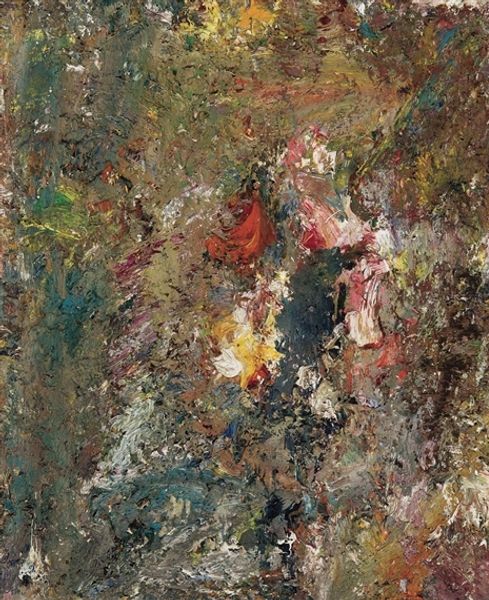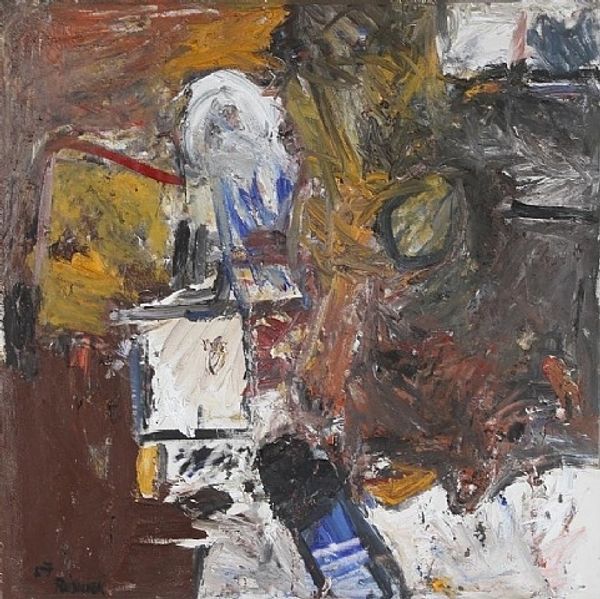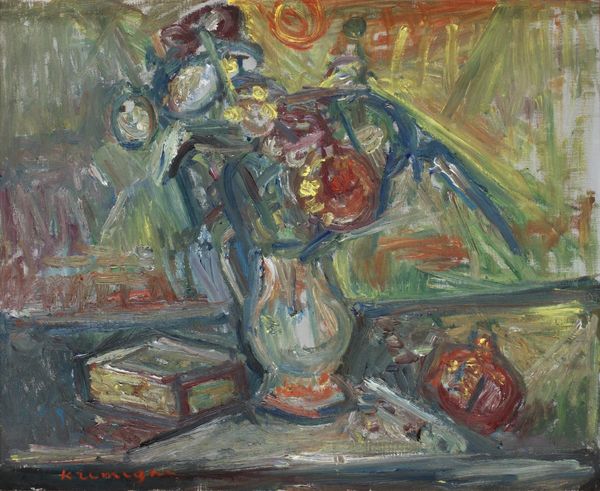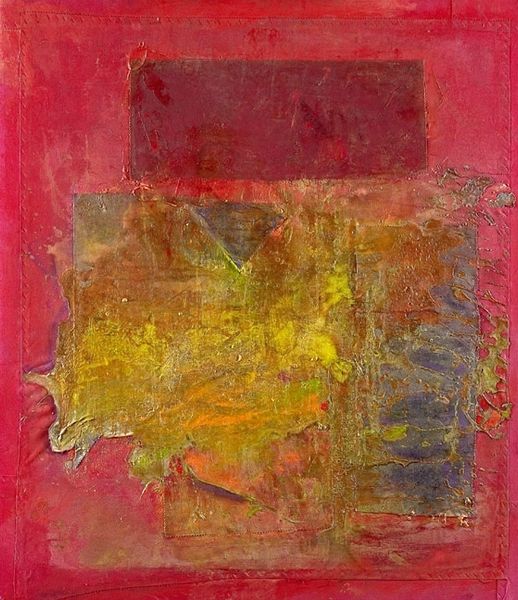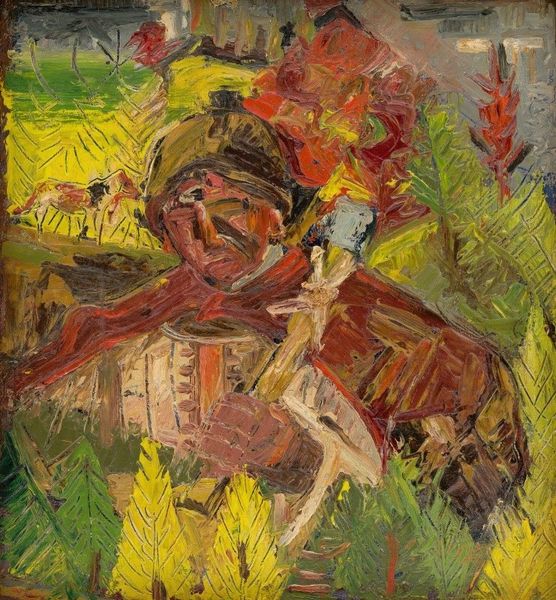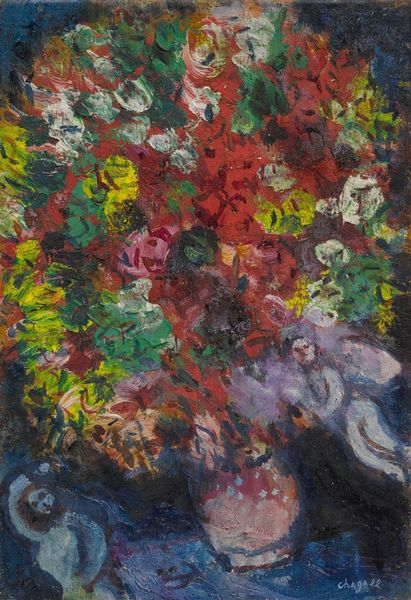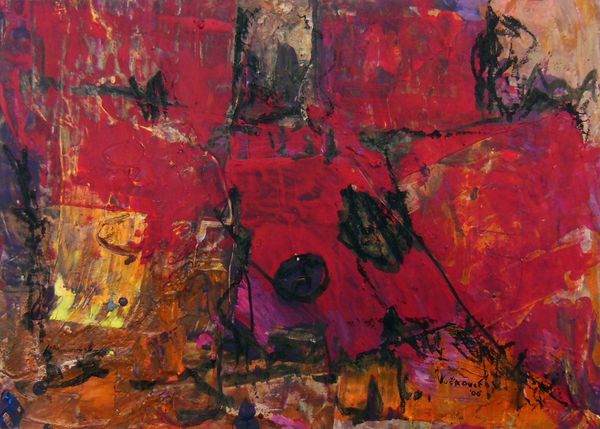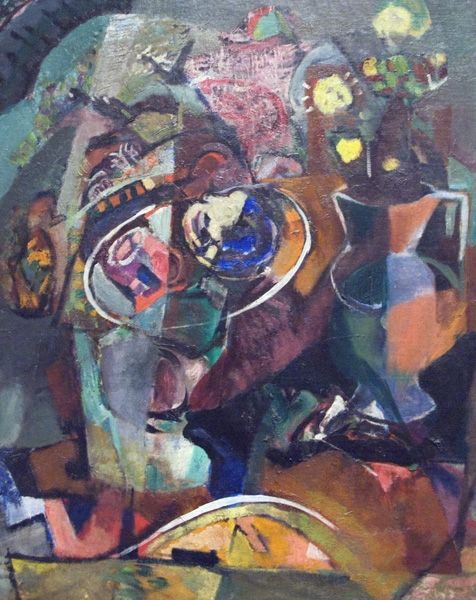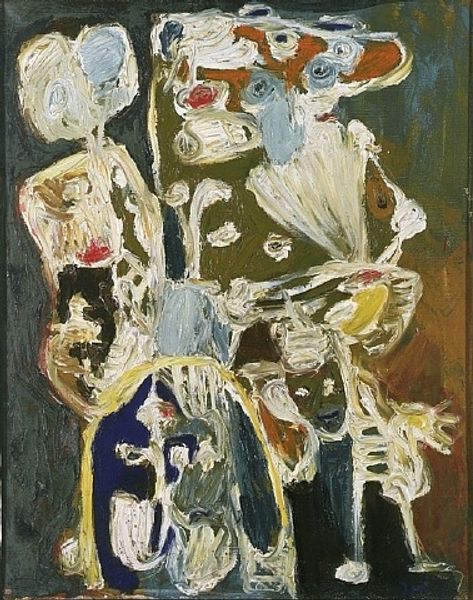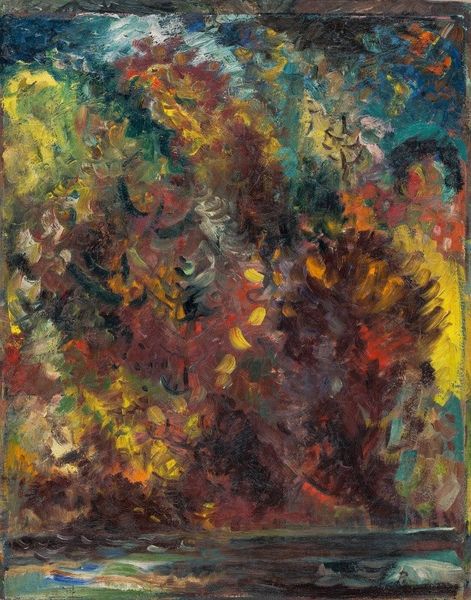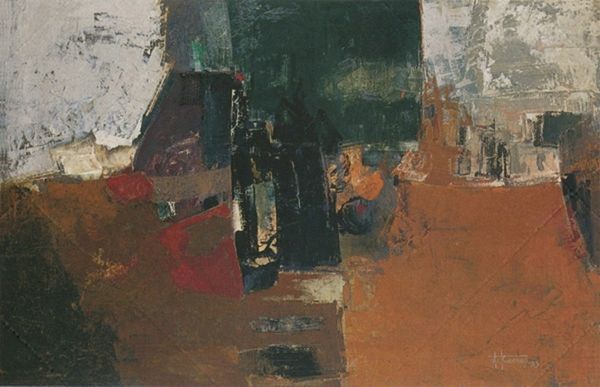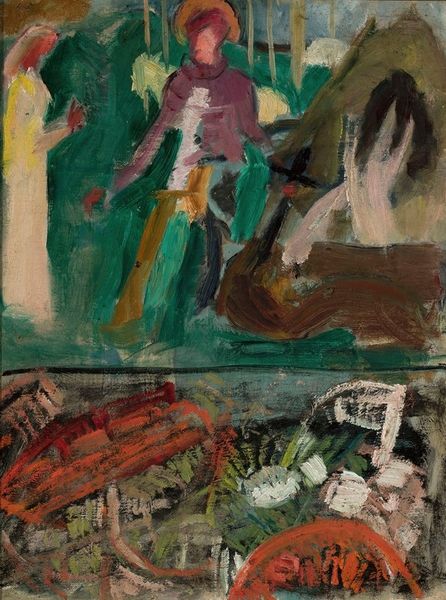
Dimensions: 89 x 90 cm
Copyright: Oleg Holosiy,Fair Use
Curator: Oleg Holosiy's "Autumn Still Life," painted in 1988. It’s an oil painting with quite a bit of impasto technique. Editor: My first thought? Controlled chaos. I see an explosion of autumnal colors – rust, ochre, crimson – yet there's a defined, albeit abstracted, arrangement of flowers, branches, and what I assume is a vase. There is almost an urgency, a melancholy in the impasto layers. Curator: It definitely captures the fleeting beauty of the season. For me, it almost screams expressionism, it’s almost a violent still life! I get this sense of abundance juxtaposed with decay, the beauty inherent in the withering of things, a very melancholic vision indeed, the colours fighting against each other to burst through! Editor: I agree; it pulls the viewer into a liminal space, a post-Soviet, late 20th century feeling of impending change. Holosiy's technique underscores that tension beautifully, each brushstroke building towards a cohesive, yet volatile whole. The autumnal palette is potent, carrying a weight that transcends mere aesthetics, almost reminiscent of trauma and resilience. Curator: I think it also mirrors, and I wonder if it’s too bold to say this, but the fleeting nature of youth and its energy… how that too, withers. In any case, a bold composition where colour is so fundamental. He seems less interested in faithful reproduction, and much more interested in channelling feeling! Editor: Yes, exactly. Holosiy seemed more dedicated to painting the emotional undercurrents. Looking at that thick paint application, I wonder what art movements, what sociopolitical shifts he hoped to rebel against. What, beyond aesthetic expression, was the activist statement he might be trying to carve, there? Curator: Holosiy was only 30 when he passed. An intriguing artist, and “Autumn Still Life” serves as a bittersweet symphony. Editor: Agreed. There's a vibrancy mixed with the undeniable sting of transience here, so typical of autumn... and life itself. I wonder about its meaning outside its cultural and geographical creation point. Food for thought.
Comments
No comments
Be the first to comment and join the conversation on the ultimate creative platform.
